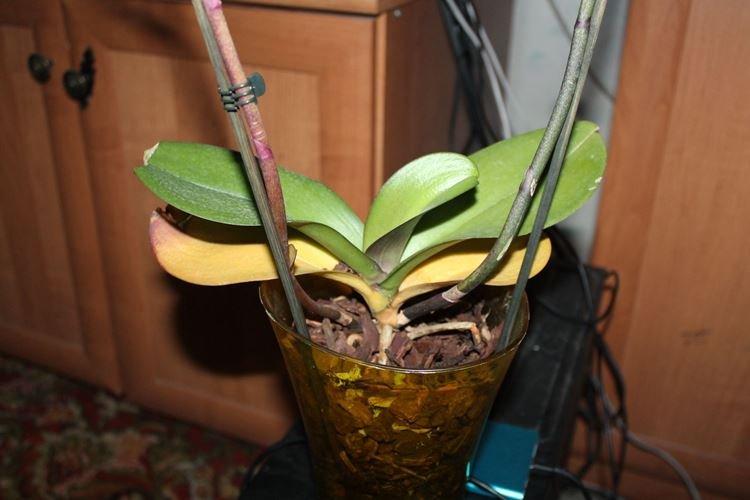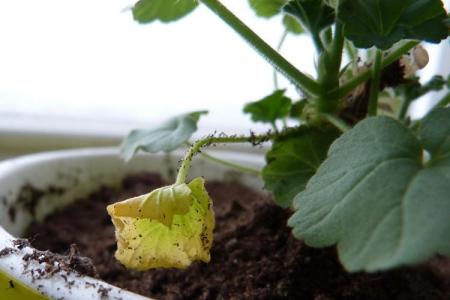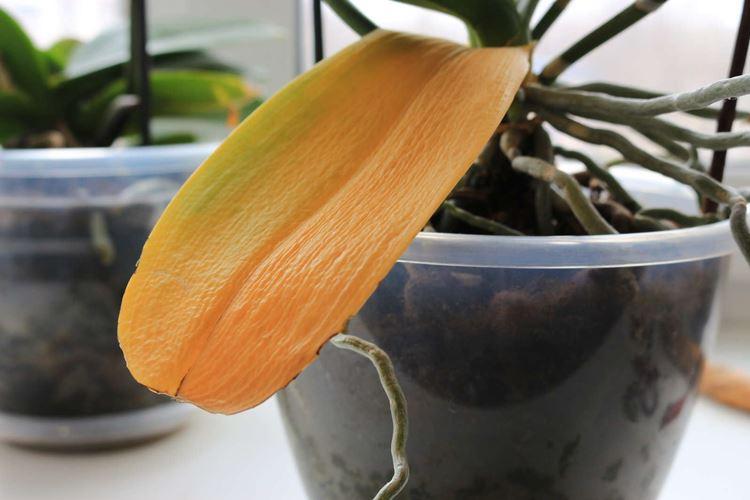
Florists appreciate the orchid for its delicate and delicate beauty. But such a fragile elegance must be cherished and properly looked after. Therefore, if you see that the leaves of the orchid have begun to turn yellow, you need to immediately take action. Let's tell you which ones!
Orchids turn yellow leaves: reasons and solutions
Buying in the midst of bloom
Most novice florists, after buying an already blooming orchid in a store, make the same mistakes. There is no need to try to preserve the beauty of a flower for a longer time, which is already under stress due to a change of scenery. Let him adapt to a new place without abrupt transplants, excessive watering and constant feeding. It is best to send the flower to a two-week quarantine and just observe its condition.
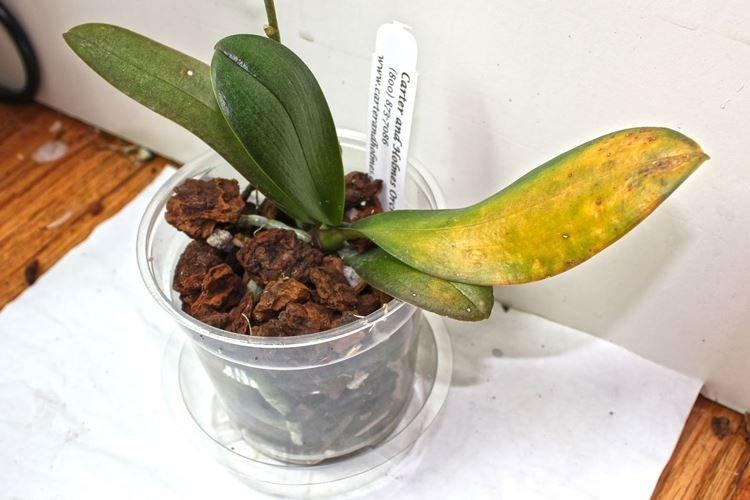
Poor water quality
If the water for irrigation is too hard, over time it will cause chlorosis of the leaves. The plates turn yellow, but the veins remain bright and green. In this case, you need to transplant the orchid into a new soil, feed it with specialized preparations and use distilled, melted or well-settled water for irrigation.
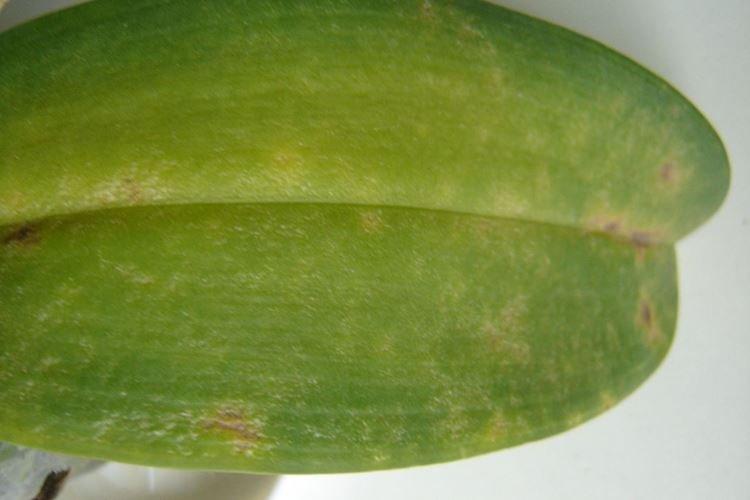
Excess moisture
Trying to give the orchid as much moisture as possible, beginners often pour it over. Because of this, the soil becomes too dense, air does not penetrate there, the roots rot, and the leaves turn yellow. Urgently reduce watering if the leaves seem to soften, and the roots or stem darken. Control the moisture content of the substrate in depth with a wooden stick.
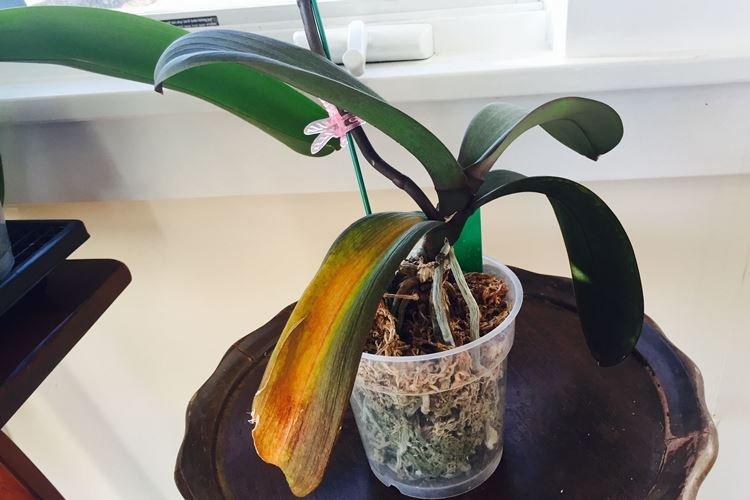
Lack of moisture
Moisture deficiency is also fraught with problems, because the orchid simply begins to dry out. This may be due to too little watering or too powerful drainage. Urgently increase the amount of watering, and indoor flowerpots can also be put in a basin of warm water for 20-30 minutes.
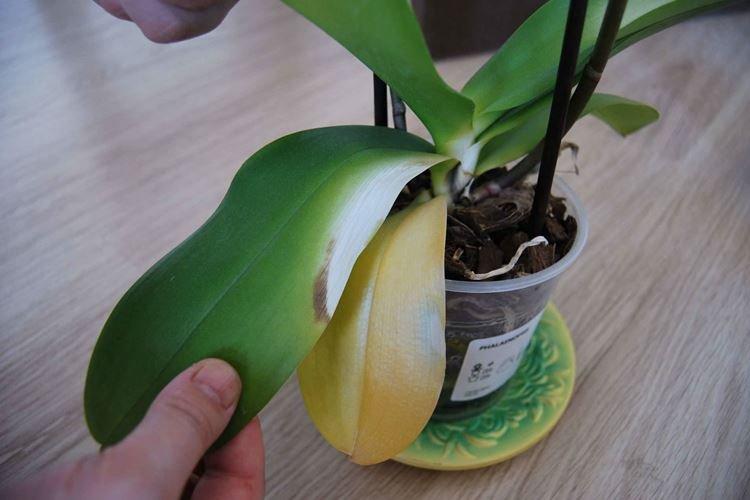
Oversupply of fertilizers
To prolong the beautiful flowering of the orchid, many begin to feed it regularly. But an excess of fertilizer leads to the fact that the plant begins to die. For example, the tips of the leaves turn yellow due to overfeeding the orchid with calcium.
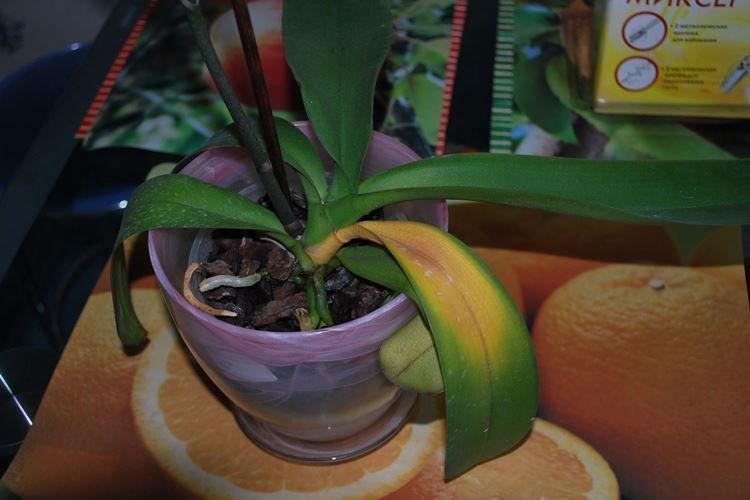
Lack of fertilizers
Flowering ornamental plants must be fed on schedule so that they grow leaves and buds. Yellowish irregular spots on orchid leaves may indicate a lack of nutrition. Together with the leaves, the lower shoots gradually turn yellow and die, if the situation is not corrected in time.
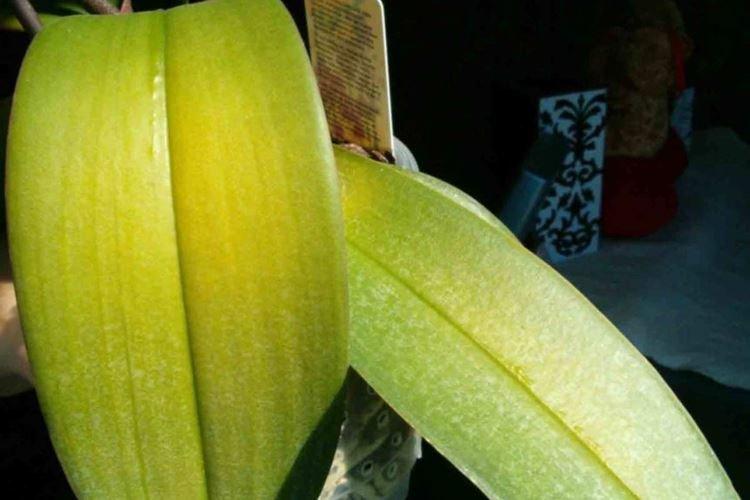
Dry air
Tropical orchids love a humid warm climate, and the air in our latitudes is much drier. This problem is especially common in indoor flowerpots, which are on the windowsill near the stove or above the radiator. If you see that the leaves have begun to turn yellow and dry, buy a humidifier, put a bowl of water next to it, or spray the orchid with a spray bottle.
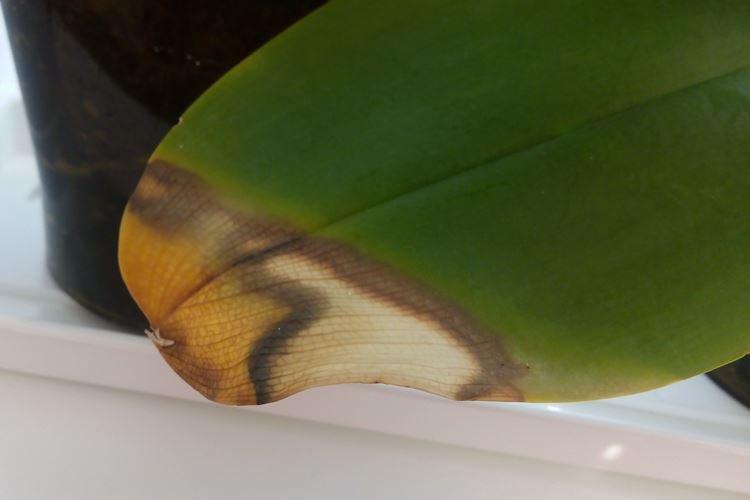
Incorrect lighting
The orchid is quite capricious, and different varieties have different lighting requirements. Some need bright sun, and others need partial shade, so be sure to make sure that your flower grows where it needs it. Due to the lack of sun in the tissues of the orchid, the green pigment is produced worse, and due to the excess, sunburn appears. In the first case, the leaves turn yellow more evenly, and in the second - pointwise, in the place of the burn.
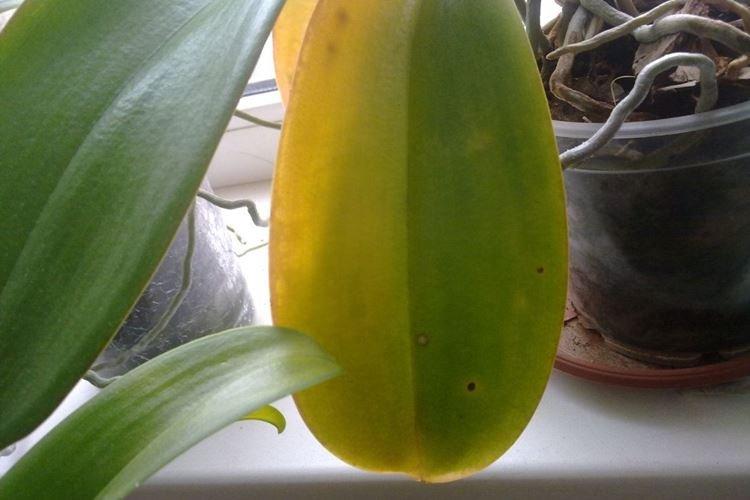
Rotting roots
Rotting of the root system manifests itself in different ways, but in many varieties of orchids, just because of this, the leaves begin to turn yellow. Most often, the reason is overflow or waterlogging. In this case, you need to quickly remove the orchid from the pot, get rid of the old soil as much as possible and cut off the rotting roots.
Treat all cuts with crushed coal, brilliant green or a special antiseptic, and then transplant into new soil. For a while, the yellow leaves will fall off, but healthy ones will grow instead.
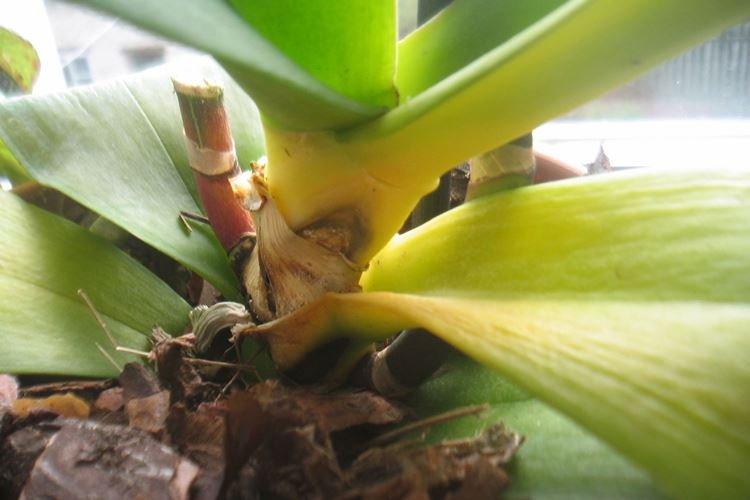
Pests and parasites
Spider mites and aphids love to settle on orchid leaves, and they hide on the back side.If there is still a strange coating and stickiness on them, check the plates from all sides. When brown growths are added to it, it is a scab, which is attracted by juicy leaves.
Yellow color, brown spots and a silvery coating reminiscent of dusting are sure signs of thrips. And if, complete with yellowness, there is a deformation of the leaf plates - most likely these are nematodes. Carefully rinse the orchid with soapy water and treat with insecticides!
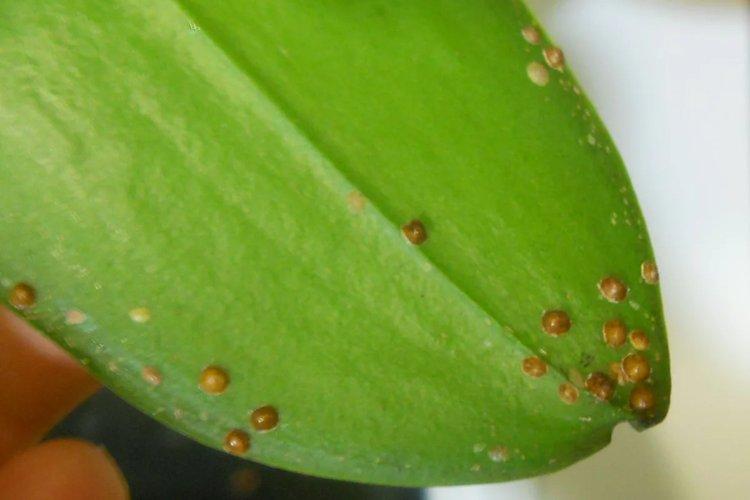
Diseases and infections
If the rounded yellow spots gradually darken and spread over all leaves and stems, it is most likely a fungus. The most common orchid problems are anthracnose, powdery mildew and gray mold. All of them are treated in the same way: radical pruning of diseased areas and treatment with fungicides.
Bacterial spotting appears as a dark yellow color on soft leaves. Basically, it affects old plates, so it is enough to cut them off and process the cut with charcoal or iodine. And if a virus is suspected, the orchid must be immediately removed from others and treated with antibiotics. Even quick measures may not help in this case, but viruses are quite rare.
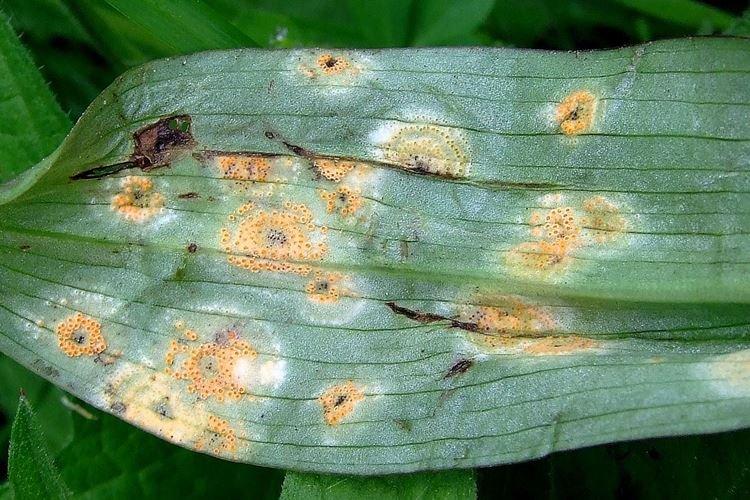
Natural causes
All leaves have their own life cycle, and they gradually age and wither. In this case, the lower leaves die off first, and they begin to turn yellow gradually and from the edges. Most often, this process is repeated after flowering, in early spring or winter.
Another possible reason is adaptation to a sharp change in conditions, but then young and green leaves should soon appear after the dead leaves. In this case, if the rest of the conditions are exactly in order, you also do not need to do anything.
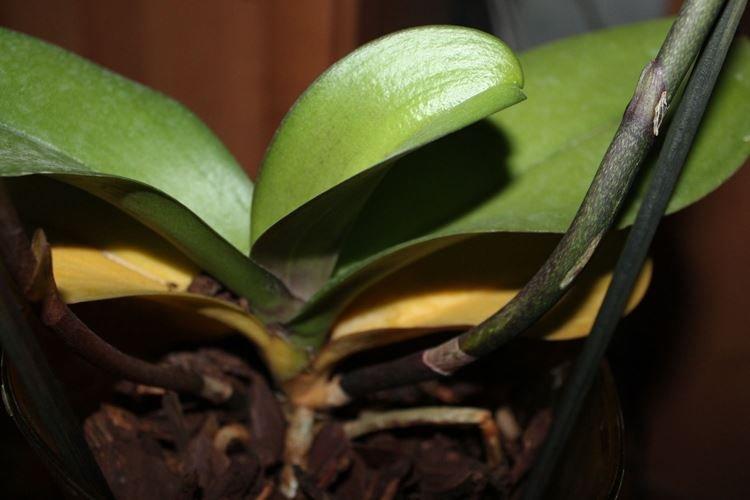
What to do to prevent orchid leaves from turning yellow?
If the problem is improper orchid care, then you need to establish a healthy regimen as soon as possible. When the problem is a fungus or infection, remove the damaged fragments as soon as possible and treat the plant with fungicides. But if the matter is in a virus or neglected root rot, the orchid, unfortunately, is better to be destroyed.
